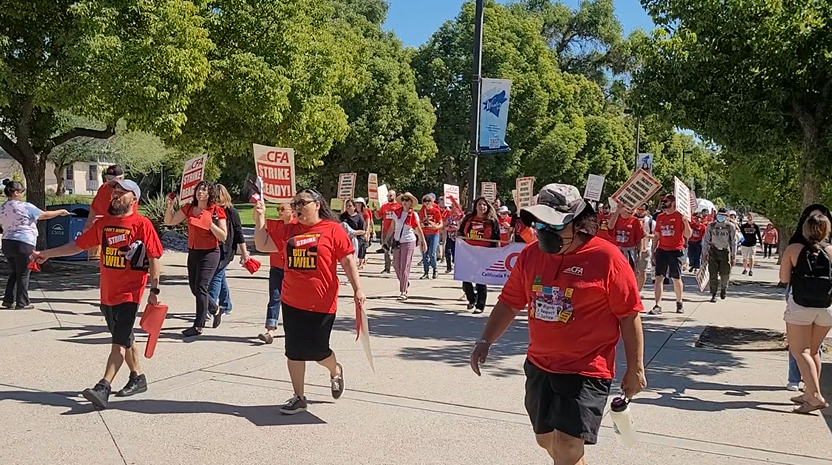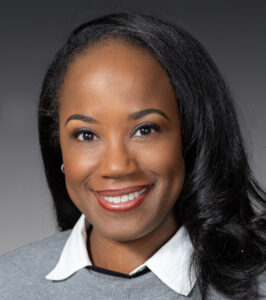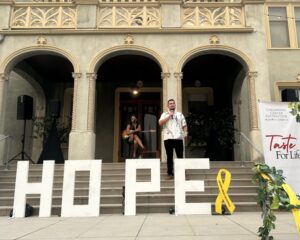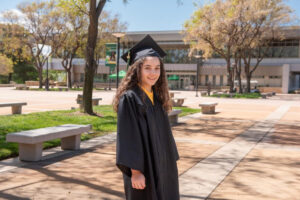Why are 29,000 Cal State Faculty Going on Strike? Because Faculty Working Conditions are Student Learning Conditions
4 min read
A recent protest on the Cal State University, San Bernardino campus.
During commencement ceremonies at California State University, San Bernardino, there is a moment that sends everyone reaching for their camera phone or a tissue. It’s when our university president asks all graduates who are the first in their family to receive a college degree to “please stand and be recognized.” The vast majority rise, proudly wave to their loved ones, and the arena erupts in celebration.
Like many CSU campuses, CSUSB ranks among the nation’s top universities for social mobility. Nearly 80% of our undergraduates are first-generation college students, 77% are underrepresented minorities (including 69% Hispanic students), and more than half receive Pell Grants, which are for low-income students. Moreover, two-thirds of CSUSB alumni live and work in California’s Inland Empire, making the university a catalyst for regional growth and progress.
Tragically, CSU administrators and trustees are actively undermining both access to a CSU degree and faculty pay and working conditions across the 23-campus system. This threatens the CSU’s promise as an engine of social mobility in the Golden State.
In September 2023, the CSU’s Board of Trustees voted –– over the objections of students, faculty, staff, and political leaders –– to raise tuition a whopping 34% over the next five years. This will make it more difficult to attain a CSU degree because aspiring students can’t afford the hike or don’t want to take on added debt. A 2016 study found up to 12% of CSU students were homeless and 24% faced food insecurity.
These tuition hikes are just the latest in a decades-long disinvestment in the CSU. Whereas California residents could once get a quality, tuition-free education from “the People’s University,” that expense is increasingly shouldered by students, who are overwhelmingly working class and people of color. As Sacramento State Professor Cecil Canton put it, “As the student body of the CSU became darker, funding became lighter.”
Our campus president told students these tuition hikes will fund priorities like “providing competitive salaries and benefits to faculty and staff.” However, since last summer, CSU management has dismissed the California Faculty Association’s proposal to raise faculty pay by 12%. On January 9th, management walked out of negotiations and imposed its “last, best, and final offer” — a 5% raise inadequate to offset the 24% inflation rate over the last five years.
CSU management has also not made any meaningful effort to address the CFA’s other demands, including raising the salary floor for lecturers, reasonable class sizes and counselor-to-student ratios, a semester of paid parental leave, accessible lactation spaces and gender-inclusive restrooms, and safe interactions with campus police. They did raise parking fees, though.
The CSU’s unwillingness to address lecturer pay is particularly galling. Part-time lecturers (or “adjuncts”) teach most CSU classes. But the pay is paltry for their qualifications, and many aren’t assigned enough courses to make ends meet or receive full benefits. To get by, some teach crushing course loads across several colleges and universities. But how can they do that and provide the instruction students deserve? This is just one way that faculty working conditions are student learning conditions.
The CSU says it can’t fund the CFA’s proposals. However, Chancellor Mildred García enjoys a nearly $1 million annual compensation package, campus presidents recently received up to 29% raises, and management personnel compensation is up 32% ($145 million) since 2016. The university also has $3.7 billion in reserves and another $8.6 billion in cash investments. Indeed, Eastern Michigan accounting professor Howard Bunsis found that the CSU could fund the CFA’s proposals with its existing annual surpluses, alone. This begs the question: why is the CSU investing in managers and mutual funds but not the people who actually do the teaching?
We reject the CSU’s cynical, neoliberal model. Amid the CSU’s sexual harassment scandals and greedy, tone-deaf executive raises, CFA members remain the system’s moral compass: we are an anti-racism and social justice union working to ensure that the CSU provides quality, affordable, and accessible higher education to Californians of all colors and class backgrounds. To do so, we need better pay and safe, equitable working conditions. Only then can we provide the transformative education our students and communities deserve. That is why the CFA’s 29,000 faculty, counselors, coaches, and librarians are striking across all 23 CSU campuses on January 22–26.
Our determination for this labor action is strong. Ninety-five percent of voting CFA members approved of the strike. We will be shoulder-to-shoulder with Teamsters Local 2010 skilled trades workers. Students support us, too. They recognize that faculty want them to succeed, but that we can’t adequately support students if we’re underpaid, overworked, and unsafe. Indeed, we welcome students, staff, community members, union siblings, and sympathetic administrators to join us on the picket line. This is a fight for all Californians, and when we fight, we win.
About the Authors
Thomas F. Corrigan, Ph.D. is a critical political economist, and he teaches media studies courses in CSUSB’s Department of Communication Studies.
Guy David Hepp, Ph.D. is an archaeologist focused on ancient Mesoamerican societies. He teaches in CSUSB’s Department of Anthropology.






